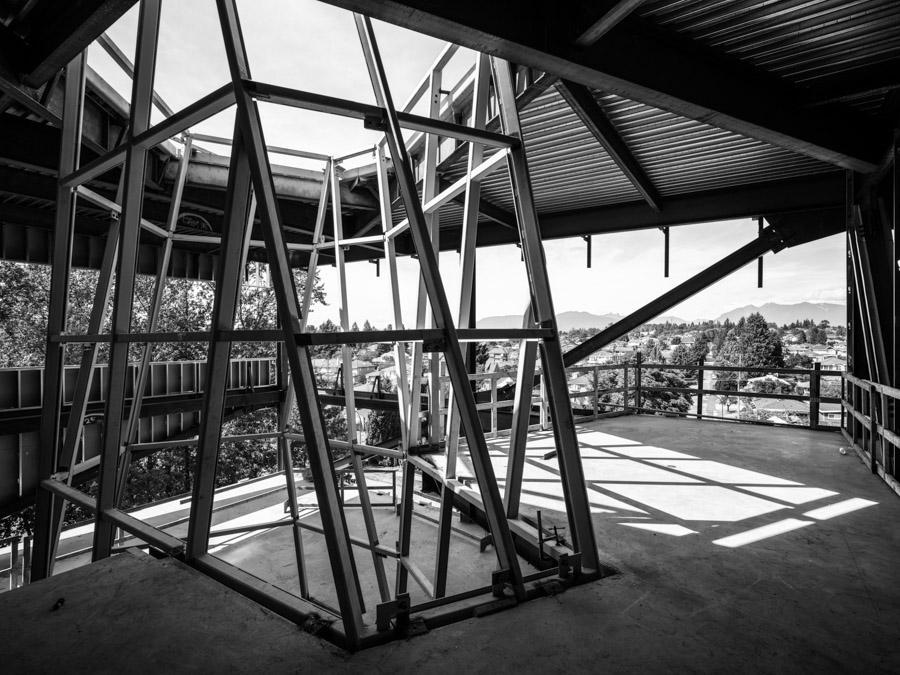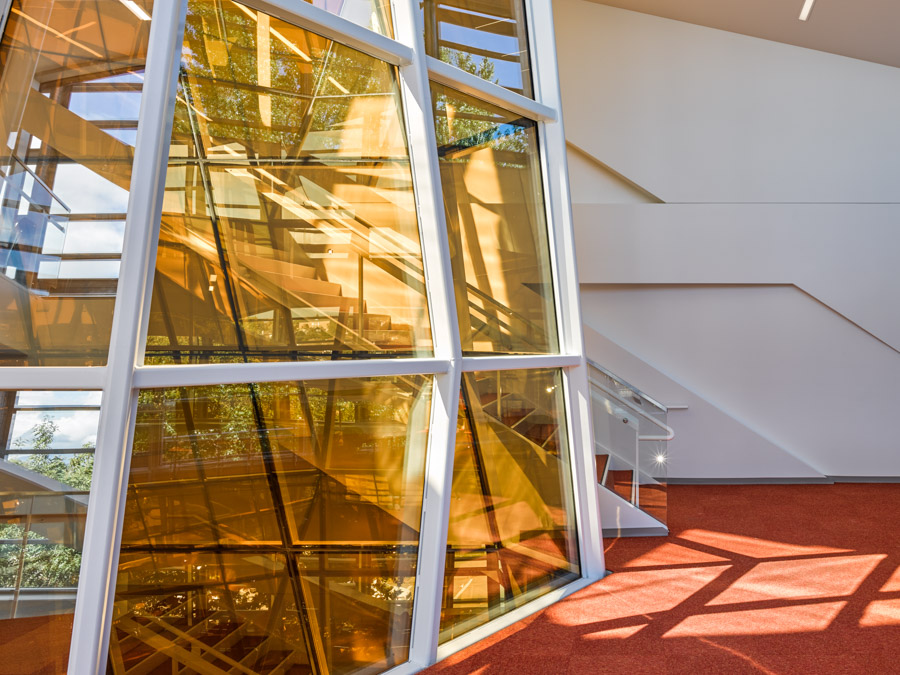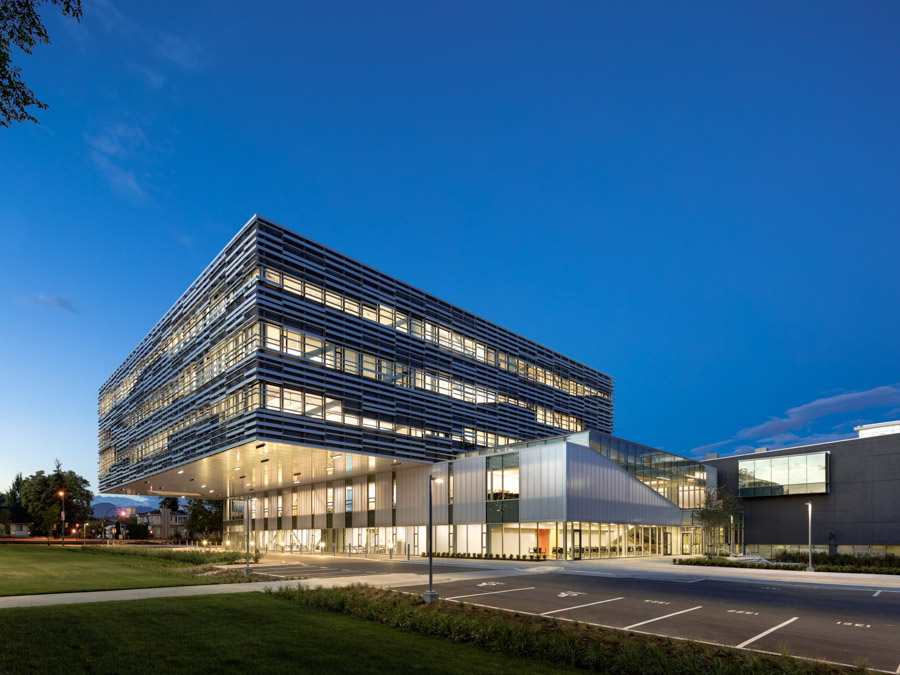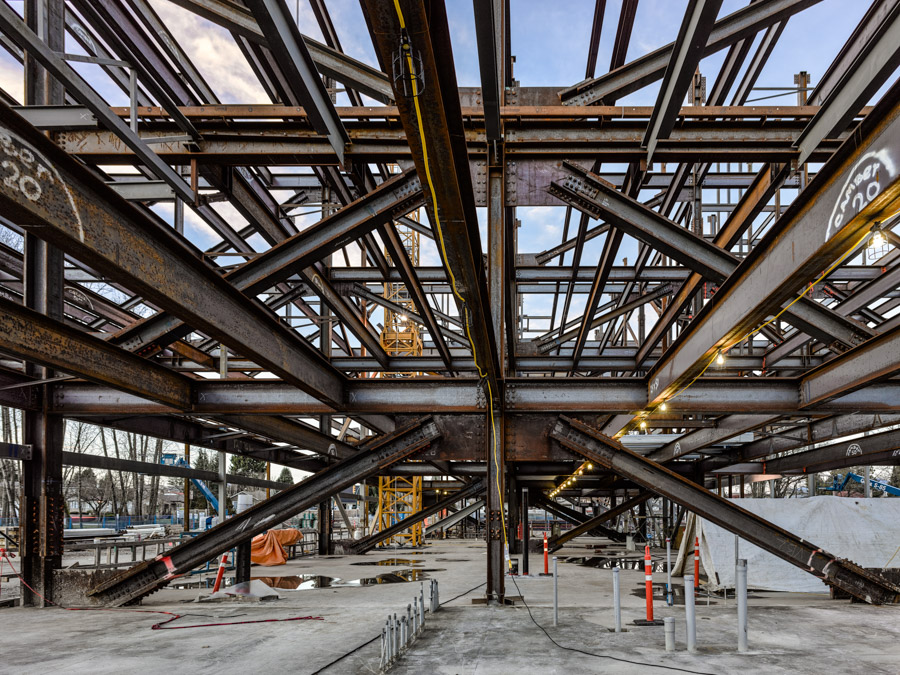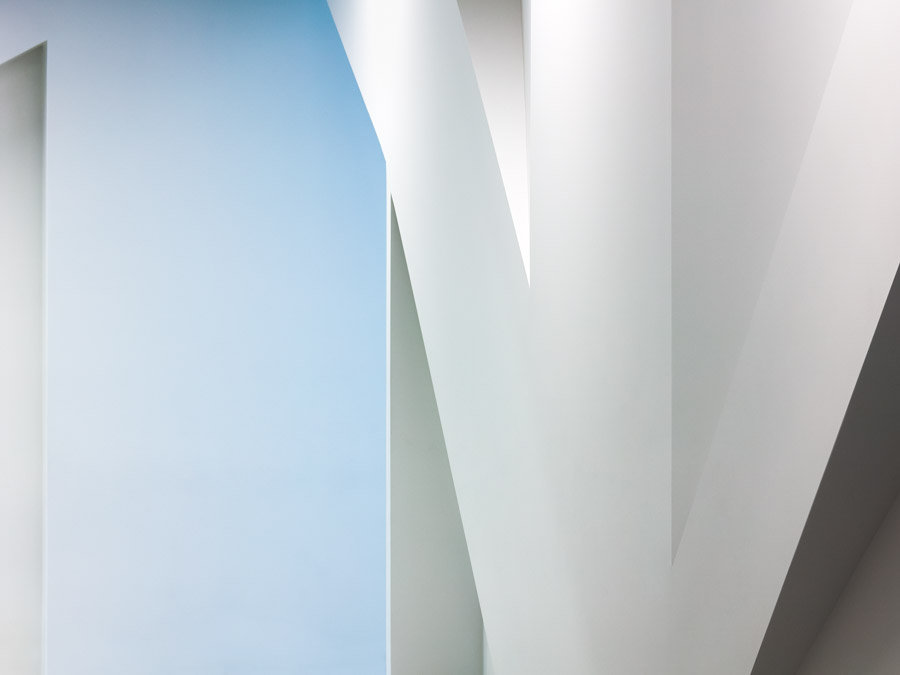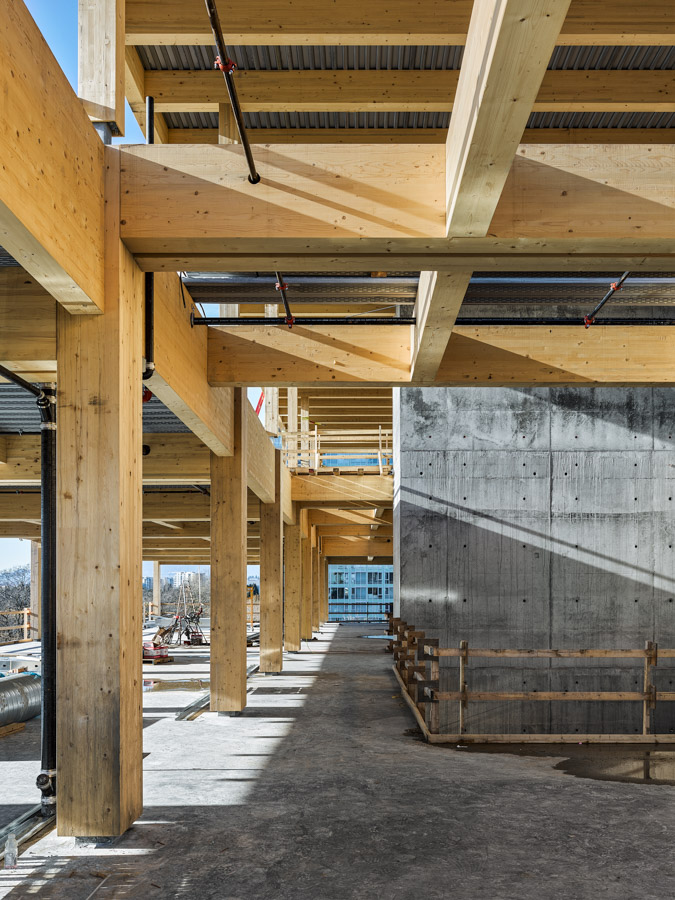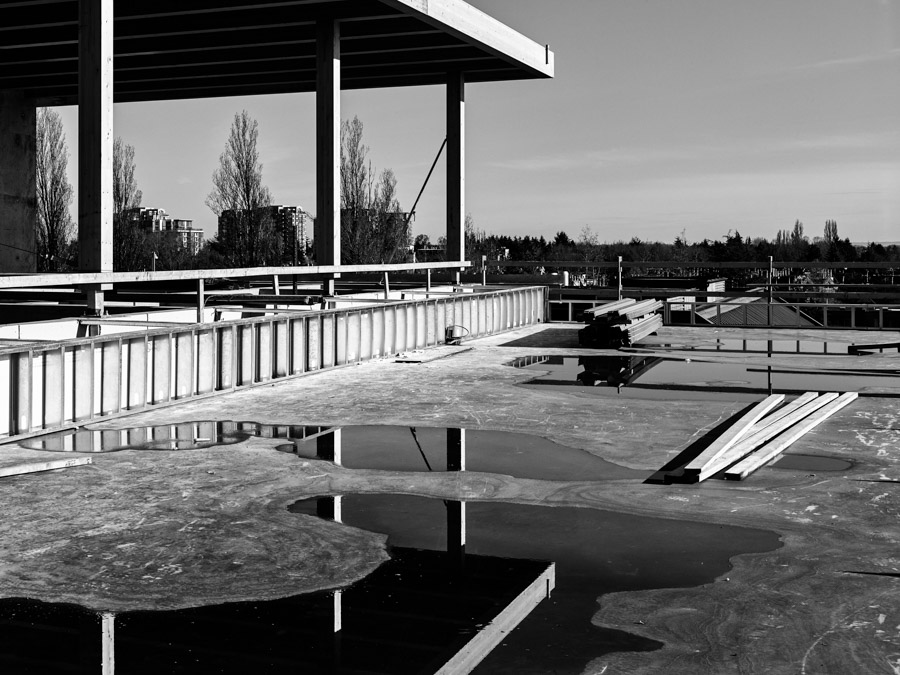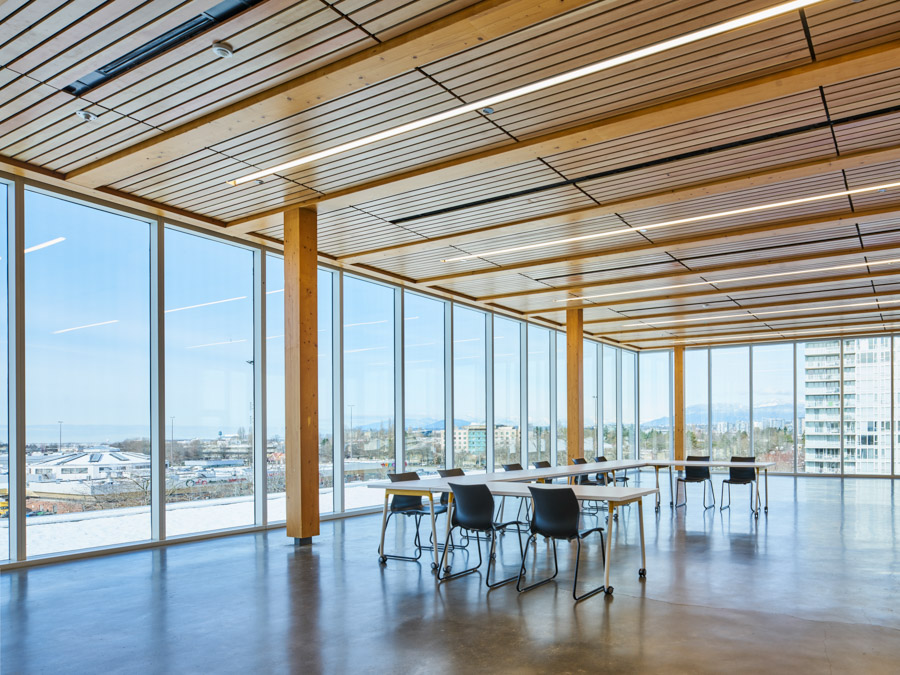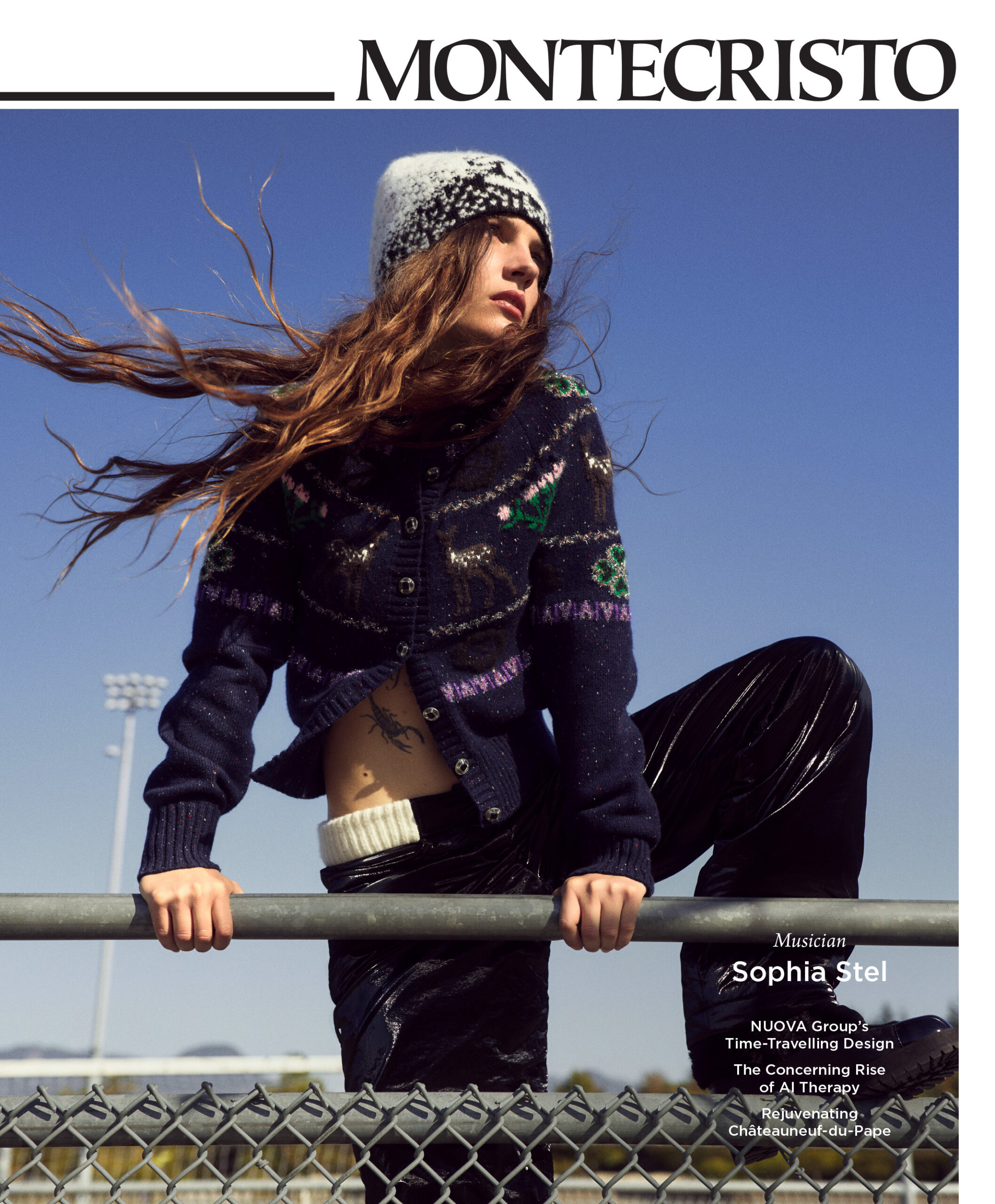Driving over the Granville Bridge, it’s hard not to notice it: a soon-to-be architectural beast under construction. Twisting towards the sky, the 52-storey high-rise looks like something out of the future with its triangular footprint and slender body that resembles geometric shapes stacked on top of one another. Urban dwellers stop in their tracks when crossing its path, with both opinions and cameras at the ready; Vancouver House, as it is called, joins the Vancouver skyline as its fourth-tallest building. What is sure to be a new landmark gateway into the city’s core has become one of its most talked-about real estate projects—and according to Andrew Latreille, that’s a very good thing.
At Pallet Coffee Roasters in Kitsilano, Latreille discusses the architectural collaboration between Bjarke Ingels Group, Dialog, and James KM Cheng Architects, which is one of the projects he is currently photographing the process of. “It’s shaking up the Vancouver public’s understanding of what architecture is,” the Vancouver-based photographer says. “I’m not saying it’s good or bad or anything, but it’s shaking Vancouver’s tower design to the core.” Vancouver House is getting people talking, allowing them to understand the bare bones of a mighty city structure.
Born and raised in Melbourne (although he happily shares that as of a few weeks ago, he is officially a Canadian citizen), Latreille has been driven by photography and architecture throughout his life, using his camera as a way to unpack the genesis of a building, connecting small details to complete concepts. “I sort of think that the buildings tell me how to photograph them,” he says. “I know how to tease out what they want to be shown.”
Moving to Vancouver 10 years ago, Latreille quickly fell in love with life here and began capturing the evolving local cityscape. What began as a series he called Structural Sunrise (images exploring transparent buildings silhouetted against the sun) soon progressed; thinking about all of the people involved in the architectural process, he started to photograph projects from the start of construction through to the end result. From architects and contractors to tile makers and plumbers, Latreille feels these groups are underappreciated; while Vancouverites love to know how things are made and where they come from—be it organic produce, fair-trade coffee, or artisanal soap—this same philosophy does not, he argues, apply to the city’s buildings. We seem to care about the aesthetic of a structure once it is complete, but not about what happens before that. It’s something he is intent on changing.
Latreille recently returned from Italy, where his project Then and Now is currently featured in the 2018 Venice Biennale’s “Time Space Existence” exhibition. Five years in the making, Then and Now is a collection of images taken in Vancouver and the Yukon that dissect the architectural process. Included is the Wilson School of Design at Kwantlen Polytechnic University in Richmond and the Langara Science and Technology Building in Vancouver; images depict the structures at various stages of progress, showcasing the work that goes into each one and also, on a broader scale, highlighting how fast the city can change.
“I’m hoping, at an architectural level, people start to ask more questions about architects, contractors, and artisans that are involved in the process,” adds Latreille. “I think understanding the process of anything we do nowadays is important.” As with most things, the appreciation of a building is magnified when we understand the hard work that went into it.
Read more from Design.

